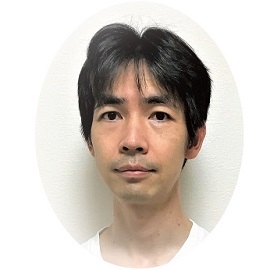- News
- Stochastic Processes in Random media (Special Lectures)
Stochastic Processes in Random media (Special Lectures)

Dates
Add to calendar1010
MON 20221017
MON 2022- Place
- Room 205. 2nd Floor, Building 63, Waseda University, Nishi-Waseda Campus
- Time
- 14:30 - 18:30
- Posted
- 2022年7月28日(木)
On October 10th and 17th, 2022, the following special lectures will be delivered as part of the international activities of the Multiscale Analysis, Modelling and Simulation Unit. Professor Martin T. Barlow and Professor Ryoki Fukushima will deliver lectures on stochastic processes in random media motivated by mathematical physics, from the basics to the recent results.
Title
Stochastic Processes in Random media (Special Lectures)
Dates (Japan Time)
October 10 (Monday)
- 14:30-16:10 Ryoki Fukushima (University of Tsukuba: Associate Professor)
- 16:30-18:30 Martin T. Barlow (University of British Columbia: Emeritus Professor)
October 17 (Monday)
- 14:30-16:10 Ryoki Fukushima (University of Tsukuba: Associate Professor)
- 16:30-18:30 Martin T. Barlow (University of British Columbia: Emeritus Professor)
Lecturer
 |
Prof. Martin T. BarlowUniversity of British Columbia: Emeritus Professor Lecture theme: Harnack inequalities: from PDE to graphs, fractals and metric spaces |
 |
Prof. Ryoki FukushimaUniversity of Tsukuba: Associate Professor Lecture theme: Probabilistic aspects of the Anderson model |
Venue
Room 205, 2nd Floor, Building 63, Waseda University, Nishi-Waseda Campus / Online via Zoom
Language
English
Audience
Researchers, Students
Open to the public through Zoom
Registration
Required. Please register from here.
Contact information
Inquiries about lecture content
Takashi KUMAGAI (Professor, Faculty of Science and Engineering, Waseda University)
t-kumagai [at] waseda.jp
Inquiries about registration, etc.
Multiscale Analysis, Modelling and Simulation Unit
info [at] sgu-mathphys.sci.waseda.ac.jp
Time Table (Including Q&A time)
October 10 (Monday), Japan Time
14:30 – 16:10 |
Ryoki Fukushima (University of Tsukuba: Associate Professor)
|
| (Abstract) The Anderson Hamiltonian is a Schroedinger operator with random potential. The random potential is usually assumed to be stationary and ergodic, which roughly means that it is macroscopically homogeneous. However, its spectral properties exhibit striking differences to the case of periodic potentials: there are dense pure point spectrum with localized eigenfunctions around the ground state energy. In the first half of this lecture, I will quickly review some of the results in this direction. In the second half, I will focus on a part of the proof where a probabilistic method called “large deviation principle” plays an important role. There we also encounter a seemingly unrelated polymer model which is of interest itself. |
|
16:30 – 18:30 |
Martin T. Barlow (University of British Columbia: Emeritus Professor)
|
| (Abstract) A major problem in PDE, solved independently in the late 1950s by de Giorgi, Moser and Nash, was the regularity of solutions to second order divergence form equations. Moser’s approach was to prove a Harnack inequality, which can be understood in probabilistic terms. The Harnack inequalities (elliptic and parabolic) of Moser are versatile and powerful tools: for example they imply immediately the Liouville property — ie that all bounded harmonic functions are constant. The proof techniques of de Giorgi, Moser and Nash are also very robust, and can be adapted to graphs and general metric spaces. These lectures will focus on the stability of these Harnack inequalities under perturbations of the space, such as by rough isometries. |
October 17 (Monday), Japan Time
14:30 – 16:10 |
Ryoki Fukushima (University of Tsukuba: Associate Professor)
|
| (Abstract) The Anderson Hamiltonian was introduced to describe the motion of an electron in a disordered material, but it can also be used to describe the behavior of the heat with random sources and sinks by considering the corresponding parabolic problem. This direction has also been studied actively since 1990 and rather complete results have been proved for various models. In the first half of this lecture, I will mainly discuss the case of unbounded potentials, where the so-called the extreme value theory plays an important role. In the second half, I will explain more recent advances in the case of bounded potentials. |
|
16:30 – 18:30 |
Martin T. Barlow (University of British Columbia: Emeritus Professor)
|
| (Abstract) A major problem in PDE, solved independently in the late 1950s by de Giorgi, Moser and Nash, was the regularity of solutions to second order divergence form equations. Moser’s approach was to prove a Harnack inequality, which can be understood in probabilistic terms. The Harnack inequalities (elliptic and parabolic) of Moser are versatile and powerful tools: for example they imply immediately the Liouville property — ie that all bounded harmonic functions are constant. The proof techniques of de Giorgi, Moser and Nash are also very robust, and can be adapted to graphs and general metric spaces. These lectures will focus on the stability of these Harnack inequalities under perturbations of the space, such as by rough isometries. |
